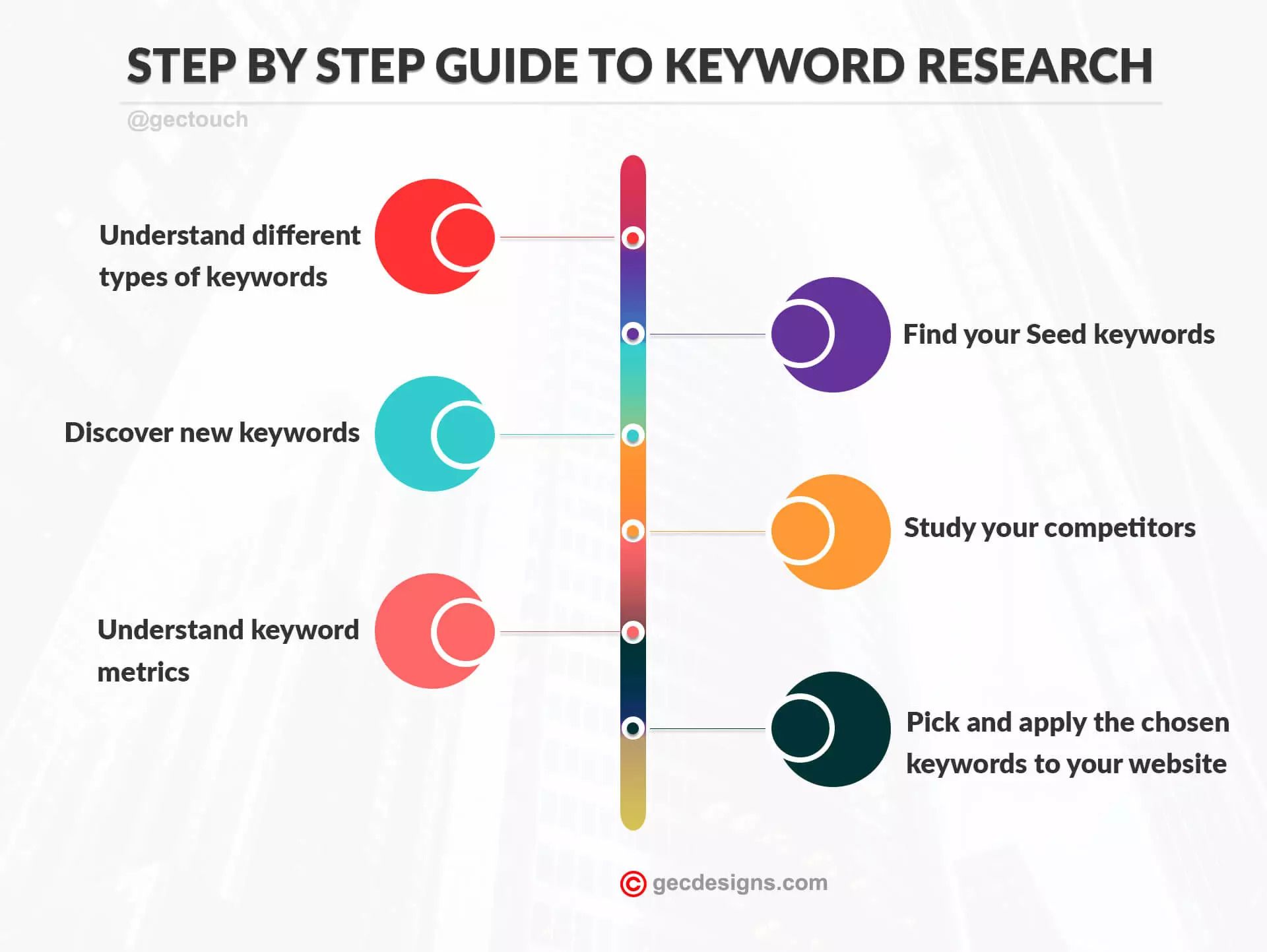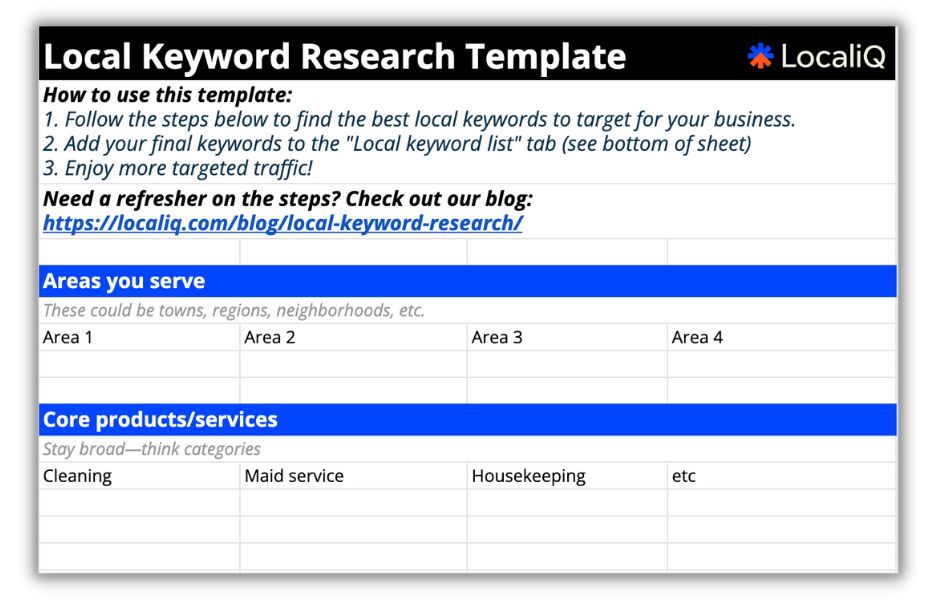Why Local Keyword Research Matters for Your Business
Local keyword research is a crucial step in any local SEO strategy, enabling businesses with a physical presence to increase their online visibility, target their marketing efforts more effectively, and ultimately drive more conversions. By understanding how to do local keyword research, businesses can gain a competitive edge in their local market and attract more customers through targeted online marketing.
In today’s digital age, local search has become an essential channel for businesses to reach their target audience. According to Google, 76% of local mobile shoppers visit a store within a day of conducting a local search. Moreover, 72% of consumers who perform a local search visit a store within five miles of their location. These statistics highlight the importance of local keyword research in driving foot traffic and sales for businesses with a physical presence.
Local keyword research also enables businesses to target their marketing efforts more effectively. By identifying the most relevant and high-traffic keywords in their local market, businesses can create targeted content, ads, and marketing campaigns that resonate with their target audience. This targeted approach can lead to higher conversion rates, as businesses are able to speak directly to the needs and interests of their local customers.
Furthermore, local keyword research can help businesses to improve their online visibility and credibility. By optimizing their website and online presence for local keywords, businesses can increase their search engine rankings, drive more traffic to their website, and establish themselves as authorities in their local market.
In the next section, we will explore the importance of identifying your target audience and understanding local search behavior, providing valuable insights into how to do local keyword research effectively.
Identifying Your Target Audience: Understanding Local Search Behavior
Understanding local search behavior is crucial to identifying your target audience and creating an effective local keyword research strategy. Local search behavior refers to the way people search for products, services, or information online in a specific geographic area. By analyzing local search behavior, businesses can gain insights into the types of keywords and phrases their target audience uses, as well as their search intent and preferences.
To gather insights into local search behavior, businesses can use tools like Google Trends and Keyword Planner. Google Trends provides information on popular search terms and topics in a specific geographic area, while Keyword Planner offers data on search volume, competition, and cost-per-click for specific keywords. By analyzing this data, businesses can identify patterns and trends in local search behavior and create a list of relevant keywords and phrases to target.
For example, a business that offers plumbing services in New York City might use Google Trends to identify popular search terms like “emergency plumber NYC” or “plumbing services Manhattan.” They might also use Keyword Planner to analyze the search volume and competition for these keywords, as well as identify long-tail phrases like “24-hour plumber NYC” or “plumbing repair services Brooklyn.”
By understanding local search behavior and identifying relevant keywords and phrases, businesses can create targeted content, ads, and marketing campaigns that resonate with their target audience. This targeted approach can lead to higher conversion rates, as businesses are able to speak directly to the needs and interests of their local customers.
In the next section, we will explore the techniques for brainstorming local keywords, including using location-based keywords, long-tail phrases, and industry-specific terms, and how to use tools like Ahrefs and SEMrush to generate ideas.
Brainstorming Local Keywords: Techniques for Generating Relevant Terms
Brainstorming local keywords is a crucial step in the local keyword research process. By generating a list of relevant and high-traffic keywords, businesses can create targeted content, ads, and marketing campaigns that resonate with their target audience. Here are some techniques for brainstorming local keywords:
Location-based keywords: Use location-based keywords to target specific geographic areas, such as cities, states, or zip codes. For example, a business that offers plumbing services in New York City might use keywords like “NYC plumber” or “plumbing services Manhattan.”
Long-tail phrases: Use long-tail phrases to target specific search queries, such as “emergency plumber NYC” or “plumbing repair services Brooklyn.” Long-tail phrases are less competitive and more targeted than generic keywords, making them a great option for local businesses.
Industry-specific terms: Use industry-specific terms to target specific industries or niches, such as “HVAC services” or “electrical contractors.” Industry-specific terms can help businesses target specific audiences and create targeted content.
Tools like Ahrefs and SEMrush can also be used to generate ideas for local keywords. These tools provide data on search volume, competition, and cost-per-click, as well as suggestions for related keywords and phrases.
For example, a business that offers landscaping services in Los Angeles might use Ahrefs to identify relevant keywords like “Los Angeles landscaping” or “landscaping services LA.” They might also use SEMrush to analyze the competition and search volume for these keywords, as well as identify long-tail phrases like “Los Angeles lawn care” or “landscaping design LA.”
By using these techniques and tools, businesses can generate a list of relevant and high-traffic local keywords that will drive targeted traffic to their website.
In the next section, we will explore the process of conducting keyword research, including how to use tools like Google Keyword Planner, Ahrefs, and SEMrush to analyze search volume, competition, and cost-per-click, and how to prioritize keywords based on relevance and potential return on investment.
Conducting Keyword Research: Tools and Strategies for Success
Conducting keyword research is a critical step in the local keyword research process. By analyzing search volume, competition, and cost-per-click, businesses can identify the most relevant and high-traffic keywords to target. Here are some tools and strategies for conducting keyword research:
Google Keyword Planner: Google Keyword Planner is a free tool that provides data on search volume, competition, and cost-per-click for specific keywords. Businesses can use this tool to identify relevant keywords, analyze competition, and prioritize keywords based on relevance and potential return on investment.
Ahrefs and SEMrush: Ahrefs and SEMrush are paid tools that provide more advanced data on keyword research, including keyword suggestions, competitor analysis, and backlink analysis. These tools can help businesses identify gaps in the market, analyze competitor keywords, and create a targeted keyword list.
Keyword analysis: When conducting keyword research, it’s essential to analyze the search volume, competition, and cost-per-click for each keyword. This data can help businesses prioritize keywords based on relevance and potential return on investment.
For example, a business that offers plumbing services in Los Angeles might use Google Keyword Planner to identify relevant keywords like “Los Angeles plumber” or “plumbing services LA.” They might also use Ahrefs to analyze the competition and search volume for these keywords, as well as identify long-tail phrases like “Los Angeles emergency plumber” or “plumbing repair services LA.”
By using these tools and strategies, businesses can conduct thorough keyword research and identify the most relevant and high-traffic keywords to target.
In the next section, we will explore the importance of analyzing competitor keywords, including how to use tools like Ahrefs and SEMrush to identify gaps in the market, and how to use this information to inform your local keyword research strategy.
Analyzing Competitor Keywords: Understanding the Local Search Landscape
Analyzing competitor keywords is a crucial step in the local keyword research process. By understanding the keywords and phrases used by your competitors, you can identify gaps in the market and create a more effective local keyword research strategy.
Tools like Ahrefs and SEMrush can help you analyze competitor keywords. These tools provide data on competitor keyword rankings, search volume, and competition, as well as suggestions for related keywords and phrases.
For example, a business that offers plumbing services in Los Angeles might use Ahrefs to analyze the keywords used by their competitors, such as “Los Angeles plumber” or “plumbing services LA.” They might also use SEMrush to identify gaps in the market, such as long-tail phrases like “Los Angeles emergency plumber” or “plumbing repair services LA.”
By analyzing competitor keywords, businesses can gain insights into the local search landscape and create a more effective local keyword research strategy. This can help them to:
Identify gaps in the market: By analyzing competitor keywords, businesses can identify gaps in the market and create a more effective local keyword research strategy.
Create targeted content: By understanding the keywords and phrases used by their competitors, businesses can create targeted content that resonates with their target audience.
Improve search engine rankings: By optimizing their website for local keywords, businesses can improve their search engine rankings and drive more traffic to their website.
In the next section, we will explore the importance of refining your keyword list, including how to use keyword clustering, latent semantic indexing, and long-tail phrases to create a targeted list of keywords that will drive relevant traffic to your website.
Refining Your Keyword List: Tips for Creating a Targeted List
Refining your keyword list is a crucial step in the local keyword research process. By using techniques like keyword clustering, latent semantic indexing, and long-tail phrases, you can create a targeted list of keywords that will drive relevant traffic to your website.
Keyword clustering: Keyword clustering involves grouping related keywords together to create a more targeted list. For example, a business that offers plumbing services in Los Angeles might cluster keywords like “Los Angeles plumber,” “plumbing services LA,” and “emergency plumber Los Angeles” together.
Latent semantic indexing: Latent semantic indexing (LSI) involves using related keywords and phrases to create a more targeted list. For example, a business that offers plumbing services in Los Angeles might use LSI keywords like “plumbing repair,” “plumbing installation,” and “plumbing maintenance” to create a more targeted list.
Long-tail phrases: Long-tail phrases involve using more specific keywords and phrases to create a more targeted list. For example, a business that offers plumbing services in Los Angeles might use long-tail phrases like “Los Angeles emergency plumber,” “plumbing services LA,” and “plumbing repair Los Angeles” to create a more targeted list.
By refining your keyword list using these techniques, you can create a more targeted list of keywords that will drive relevant traffic to your website. This can help you to:
Improve search engine rankings: By optimizing your website for local keywords, you can improve your search engine rankings and drive more traffic to your website.
Increase conversion rates: By using targeted keywords and phrases, you can increase conversion rates and drive more sales.
Enhance user experience: By using relevant and targeted keywords and phrases, you can enhance the user experience and provide more value to your customers.
In the next section, we will explore the importance of optimizing your website for local keywords, including how to optimize your website’s title tags, meta descriptions, headings, and content to rank higher in local search results.
Optimizing Your Website for Local Keywords: On-Page SEO Strategies
Once you have conducted thorough local keyword research, the next step is to optimize your website for those keywords. On-page SEO plays a crucial role in helping your website rank higher in local search results. Here are some strategies to help you optimize your website for local keywords:
1. Title Tags: Write unique and descriptive title tags for each page on your website, including your target local keywords. Title tags should be no more than 60 characters and should accurately reflect the content of the page. For example, “Best Italian Restaurant in New York City | Bella Vita.”
2. Meta Descriptions: Craft compelling and informative meta descriptions for each page, including your target local keywords. Meta descriptions should be no more than 160 characters and should entice users to click through to your website. For example, “Experience the best Italian cuisine in New York City at Bella Vita. Our restaurant offers a wide range of dishes made with fresh ingredients.”
3. Headings: Use headings (H1, H2, H3, etc.) to structure your content and highlight your target local keywords. Headings should be descriptive and concise, and should help users and search engines understand the content of the page.
4. Content: Create high-quality, engaging, and informative content that includes your target local keywords. Use variations of your keywords throughout the content, but avoid keyword stuffing. Aim for a keyword density of 1-2%.
5. URL Structure: Use descriptive and keyword-rich URLs for each page on your website. This will help search engines understand the content of the page and improve your website’s visibility in local search results.
6. Image Optimization: Optimize your images by including your target local keywords in the file name, alt tag, and description. This will help your images appear in image search results and improve your website’s overall visibility.
7. Internal Linking: Use internal linking to help users and search engines navigate your website and find relevant content. Use descriptive anchor text that includes your target local keywords.
8. Mobile-Friendliness: Ensure that your website is mobile-friendly and provides a good user experience on all devices. This is crucial for local SEO, as many users will be searching for your business on their mobile devices.
By implementing these on-page SEO strategies, you can improve your website’s visibility in local search results and attract more targeted traffic to your website. Remember to always keep your target audience in mind and focus on creating high-quality content that provides value to them. By doing so, you’ll be well on your way to mastering how to do local keyword research and optimizing your website for local keywords.
Tracking and Measuring Local Keyword Performance: Key Metrics to Monitor
After conducting thorough local keyword research and optimizing your website for local keywords, it’s essential to track and measure your keyword performance to refine your strategy and improve your online visibility. Here are the key metrics to monitor and the tools to use:
1. Search Engine Rankings: Monitor your website’s search engine rankings for your target local keywords using tools like Google Search Console, Ahrefs, or SEMrush. This will help you understand how your website is performing in local search results and identify areas for improvement.
2. Traffic: Track the traffic to your website using Google Analytics. This will help you understand how many users are visiting your website, where they’re coming from, and what pages they’re viewing. You can also use Google Analytics to track the traffic generated by your local keywords.
3. Conversion Rates: Monitor your conversion rates, including the number of leads, sales, or other desired actions generated by your website. This will help you understand the effectiveness of your local keyword research strategy and identify areas for improvement.
4. Click-Through Rates (CTRs): Track the CTRs for your local keywords using tools like Google Search Console or SEMrush. This will help you understand how often users are clicking through to your website from search engine results pages (SERPs).
5. Cost-Per-Click (CPC): Monitor the CPC for your local keywords using tools like Google Ads or SEMrush. This will help you understand the cost of generating traffic to your website and identify areas for improvement.
6. Return on Investment (ROI): Track the ROI for your local keyword research strategy using tools like Google Analytics or SEMrush. This will help you understand the revenue generated by your website and identify areas for improvement.
To track and measure these metrics, you can use a variety of tools, including:
Google Analytics: A web analytics tool that provides insights into website traffic, behavior, and conversion rates.
Google Search Console: A tool that provides insights into search engine rankings, traffic, and technical issues.
Ahrefs: A tool that provides insights into search engine rankings, backlinks, and content performance.
SEMrush: A tool that provides insights into search engine rankings, traffic, and technical issues.
By tracking and measuring these key metrics, you can refine your local keyword research strategy and improve your online visibility. Remember to always keep your target audience in mind and focus on creating high-quality content that provides value to them. By doing so, you’ll be well on your way to mastering how to do local keyword research and achieving long-term success in local search.





